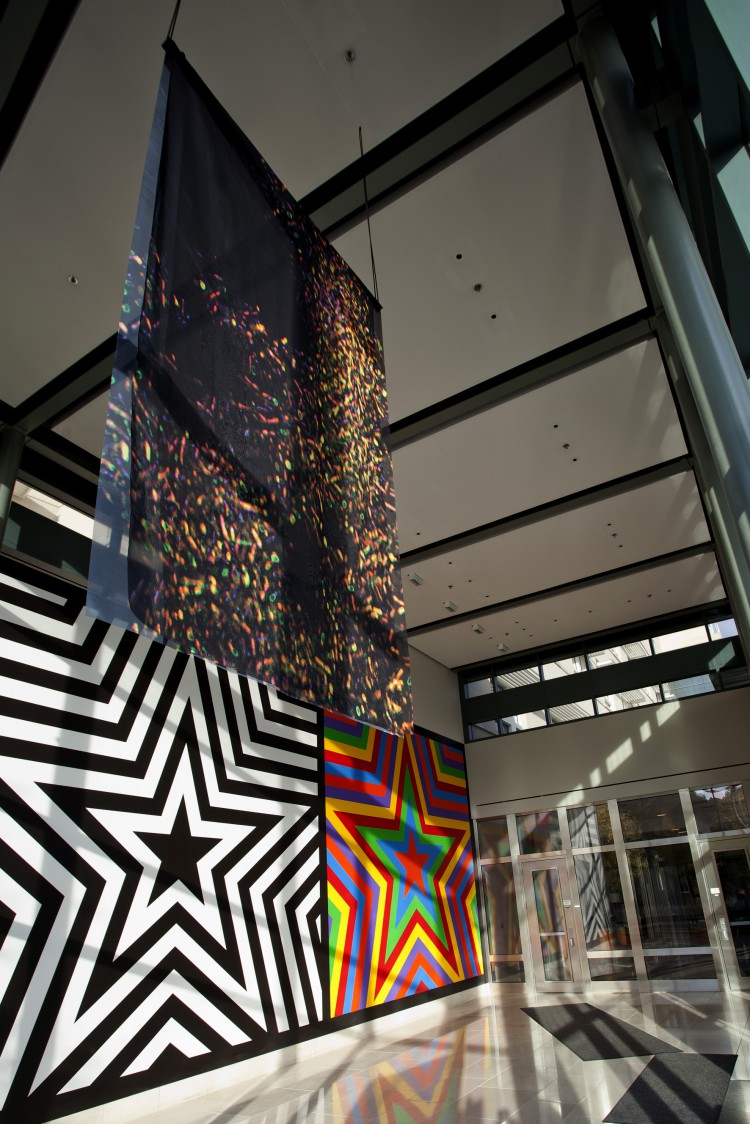PREVIOUS CONTEXTS & PARTNERS
Sabine Kacunko, whilst exploring in 2010, discovered a historical dust sample from the Sahara which was originally found in Calabria and brought back then to Alexander von Humboldt in 1823. In the framework of the UNESCO cultural project ‘BOOTSCHAFT-LIFE-FLAG’ a new subunit of 16s rRNA-Sequences was unravelled, which is found equally in plants, animals and in the DNA of human beings.
As discoverer, Sabine Kacunko named the new subunit, ‘Oceanobacillus Pulvirenatus‘ – dusty rebirth – and used this sequence as a motif for Life Flag:

These Life Flags were erected at over 94 diplomatic missions in Germany’s capital, Berlin and also at the German Foreign Ministry. They symbolised unity in the diversity of languages, cultures and nations. Through the dense network of embassies located in Berlin, the flags intention is to send a global message of shared sensitivity to the environmental and cultural concerns of our common home, the planet Earth.
Previous and present projects realized in cooperation with the following partners:
Charité Berlin; Freie Universität Berlin; Humboldt-Universität Berlin; Foreign Ministry of the Federal Republic of Germany; The Academy of Science Berlin and Brandenburg; Cultural Office Berlin; Department of City Planning Düsseldorf; Senate Chancellery Cultural Affairs Cologne; Senate Chancellery Cultural Affairs Berlin; Heinrich Heine Universität Düsseldorf; Carl von Ossietzky University Oldenburg; University of Osnabrück; University of Copenhagen; UNESCO; ICOMOS; Fraunhofer Institute; Robert-Koch Forum; Weizmann Institute Israel; CHB (Collegium Hungaricum Berlin); Institute for Cultural Diplomacy (ICD); IfA (Institute for foreign affairs); Federal Institute for Materials Research and Testing Berlin;94 diplomatic missions of Berlin